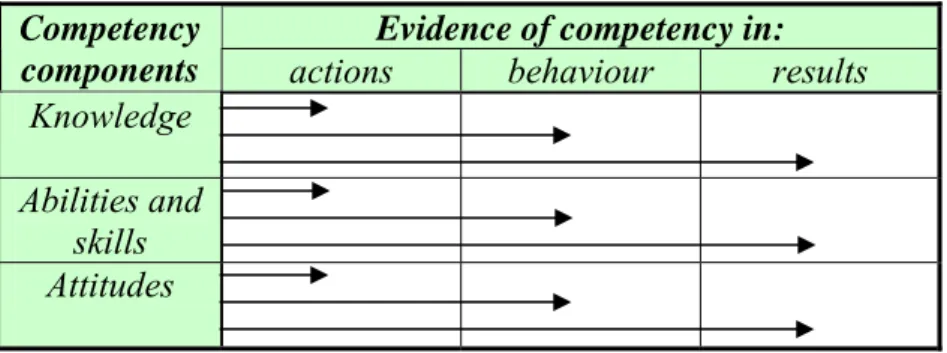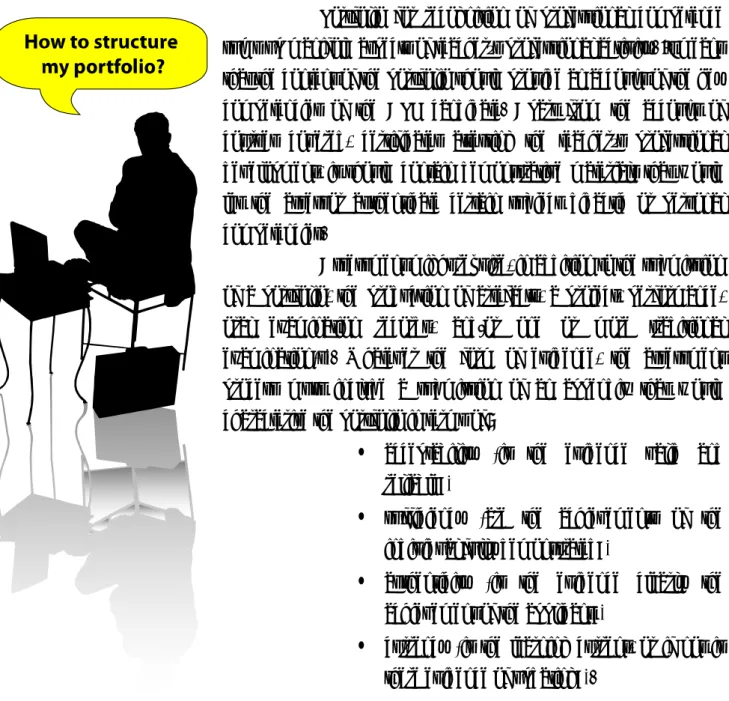It is the assessment of practical skills that is important, not only for society, but especially for the citizens themselves. This handbook aims to motivate EUD teachers to reflect, self-analyze and gain recognition for their prior learning and to help them identify the knowledge and skills acquired in non-formal and informal learning environments, as well as to prepare for assessment of previous learning. learning process (APL) by gathering evidence of prior learning. The purpose of this handbook does not include practical recommendations to shorten the vocational education teachers' course of study.
The assumption of this book is that the previous learning situation (formal, informal or casual learning) is not essential. APL's primary goal in VET teacher education is to improve the effectiveness of VET teacher education programs. The Handbook for Candidates is one of the outputs of the Leonardo da Vinci Program project.
Transfer of the Innovative Methodology for the Evaluation of the Prior Learning of the AAP Teachers" (No. LLP- LdV-TOI-2007-LT-0004). In evaluation situations, the main motivation for such a person is to get through the situation as painlessly as possible and avoid an embarrassing failure (“The most important thing for me is to make a good impression so that people praise me and to leave me alone.!").
WHAT IS THE RESULT OF ASSESSMENT OF PRIOR LEARNING?
To get the best possible results from the assessment and to ensure optimal personal/professional development, you should think about your personal motives for participating in the assessment process. Ideally, you set your own personal goal and develop a plan on how to use the assessment results for further personal and professional development. It is important to remember that the assessment process examines not only your knowledge and skills, but also your attitude and aspirations, as well as the ability to reflect on your experience.
13 Finding answers to these and other questions related to educational activities can effectively stimulate the ability to solve problematic situations and also develop self-exploration skills. The fact that EVC can be seen as an excellent personal growth stimulant is the most important stimulant.
WHAT ARE THE IMPLICATIONS OF ASSESSMENT OF PRIOR LEARNING FOR ME AS A TEACHER?
Ideally, the purpose of summative assessment is the final assessment of various learning activities, the assessment of which was formative during the learning process (Biggs, 1999; Dunn, Morgan, O'Reilly, Parry, 2004). Formative APL is strongly linked to career formation at all levels of an individual's social participation: paid or unpaid activities and civic education. Formative APL connects career formation that is mainly individual with the demands of the labor market or in employment agencies (Duvekot, Brouwer, 2004).
When assessing achievements not only in formal, but also in informal and informal learning, all types of assessment should be used - diagnostic, formative and summative. The idea of assessing prior learning is to recognize that the teacher's competence has developed in different learning situations through work and life experiences. The evaluation of the teacher's non-formal and informal learning could be described as an integrated form of evaluation, as it evaluates several related knowledge, skills and value attitudes at the same time.
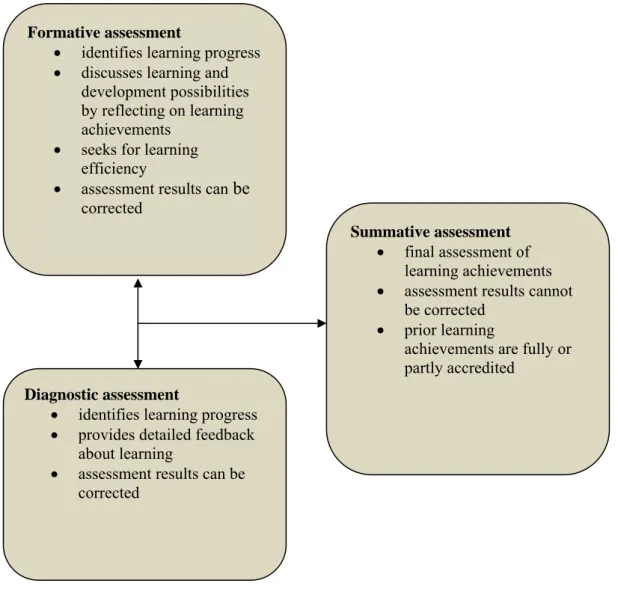
WHAT IS CHARACTERISTIC OF THE ASSESSMENT OF PRIOR LEARNING?
The assessment methods should include both assessment of the written information and examination of the empirical documentation for the competences to be recognised. The evaluation results show the strengths and weaknesses of the APL procedure, and its improvement includes improving the identified strengths as well as eliminating the discovered weaknesses. The stage of information is intended to familiarize the candidate with the APL procedure, APL principles, assessment criteria, possible assessment results.
The information phase requires the establishment of qualitative criteria and indexes to guarantee the accessibility of the EVC. It should be noted that the informing phase is not always attributed to the EVC procedure, as information processing is a very extensive and labour-intensive activity. Unlike the inform stage, which is informed about the stages and principles of the assessment procedure, in the consultation phase, the candidate is advised on the assessment procedure, paying particular attention to the evidence of learning achievements submitted and analyzing the agreement with the professional requirements. standards or learning outcomes in a particular course.
In the process of individual consultations, help is also provided to compile a portfolio of documents or other documentation that proves personal knowledge, skills and value attitudes. The stage of assessment and evaluation (such as decision-making) is the final stage of the APL procedure. This stage of assessment involves an analysis of the candidate's learning outcomes delivered in the portfolio and an analysis of its consistency with the learning outcomes identified in the study programmes.
In the process of assessing the portfolio, it is considered whether there is enough evidence to substantiate the desired skills, whether it is authentic, i.e. the assessment methods can be varied and chosen according to the situation in order to identify as much as possible achievements of a candidate and give a comprehensive picture of their competencies. The decision on which competences can be recognized is made by the assessor or the assessment committee.
In the assessment process, regardless of assessment methods or assessment results, the candidate must receive constructive feedback.
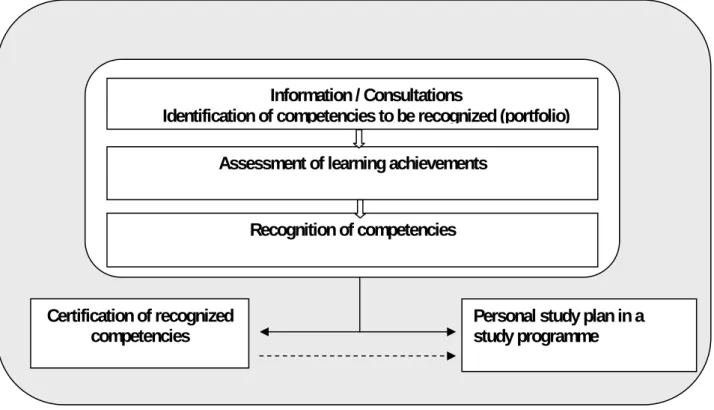
WHO PARTICIPATES IN THE ASSESSMENT OF PRIOR LEARNING?
21 Constructive feedback does not only involve positive references and remarks, it emphasizes what should be improved. The assessor's task is to decide whether the demonstrated knowledge, skills and attitudes correspond to the learning outcomes of a degree (or competences, stated in the professional standard). The assessor is responsible for analyzing the candidate's portfolio and for choosing appropriate assessment methods to attest to the evidence presented in the portfolio.
Assessor - Selection of assessment methods for each component of competence (knowledge, skills and value attitudes). AAP teacher) − Personal contact is important. Open discussion for the improvement of the procedure, taking into account the comments of all APS actors about the quality.
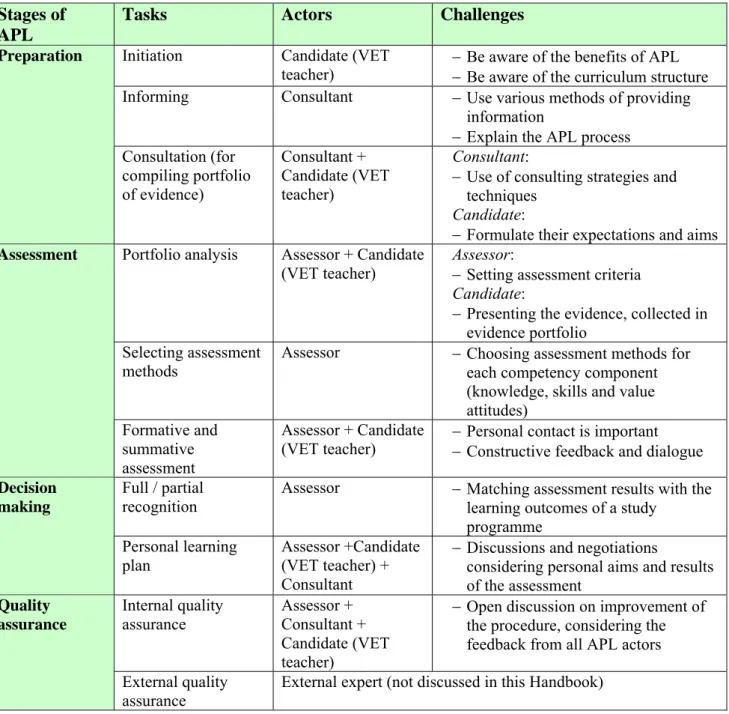
HOW DO I START THE ASSESSMENT OF MY PRIOR LEARNING?
It would be more constructive not to rush the reaction; it is better to reflect on the information (“I will consider that.”) or ask clarifying questions. Remember – you have the right to pause and change circumstances by discussing your feelings with the evaluators.
HOW CAN MY PRIOR LEARNING
ACHIEVEMENTS BE EVIDENCED AND ASSESSED?
WHAT ARE THE ASSESSMENT METHODS?
25 method because it typically involves a narrative that summarizes the candidate's work as a teacher and explains the relevance of the evidence included in the portfolio. This means that the content of the portfolio must provide an account of the APL candidate's key competences. It should be clear to the assessor exactly how each item in the portfolio provides evidence of the candidate's competence (for some subjects a brief explanation may be necessary).
Presentation of the portfolio can be held in an individual conversation between the candidate and the assessor, or in public, by involving other applicants in a discussion. Although portfolio is one of the most important methods of APL, the candidate must consider both advantages and disadvantages of this method in order to use the portfolio effectively. Like any assessment methods, portfolio used alone cannot provide the full picture of past learning achievements.
These concept maps reveal the structural organization of the material and provide a complete picture. One of the forms of creative work – the essay – can be used to assess previous learning achievements. In the introduction, the main questions, problems, key hypotheses, essay outline and sequence of arguments are formulated.
Start the essay by stating the hypothesis, in which briefly and precisely presents the essence of the answer. Support the statement in the hypothesis with theoretical materials and facts in the rest of the work. In order to assess various essential elements of the candidate's professional competence and determine their ability to purposefully solve various problems in both the study and training course, the following case modules are offered to be considered:
This case study can be successfully used to determine the meaning of the educational pedagogical situation. The quality of the technical material base for the motor engineer specialty in the VET institution is unsatisfactory. The core of the interview is usually formed by 8-10 questions, which allow to reveal the main aspects of the candidate's professional competence.
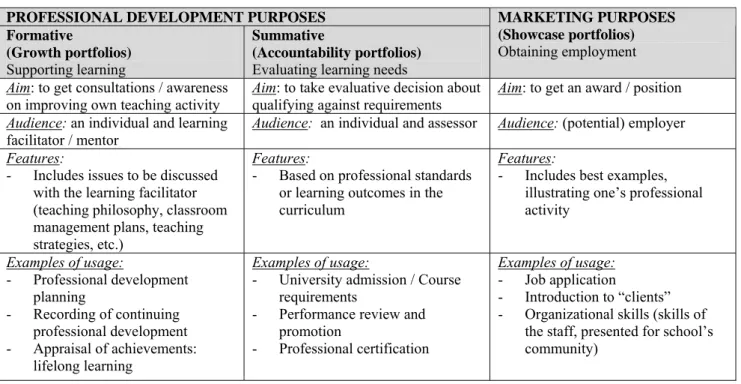
GLOSSARY
Usually unintentional from the students' perspective, as this knowledge was acquired through life experience, family, informal social interactions and other circumstances. A society that creates, shares and uses knowledge for the prosperity and well-being of its citizens (available at www.digitalstrategy.govt.nz/Media-Centre/Glossary-of-Key-Terms). Knowledge, abilities, skills and attitudes that can be acquired by a person (regardless of learning context).
Statement of what a learner is expected to know, understand and/or be able to demonstrate after completing a learning process. A society in which learning is considered important or valuable, where people are encouraged to continue learning throughout their lives, and where the opportunity to participate in education and training is available to all. The balance of power is flexible and depends on the purpose and context of learning (Duvekot, 2006).
All lifelong learning aimed at improving personal, social, civic and work skills and knowledge. Learning which is included in planned activities that are not explicitly defined as learning, but which contain an important learning element. Any educational activity organized outside the established formal system – whether acting separately or as an important feature of some wider activity.
It usually does not lead to certification (adapted from: www.cedefop.gr: "EU Knowledge system for lifelong learning"). A process by which, through assessment, credit is given for learning that has already been acquired in various ways. Confirmation by a competent body that learning outcomes achieved by an individual have been assessed against pre-defined criteria and conform to the agreed standard.
Validation usually refers to the process of recognizing a wider range of knowledge and skills than is normally the case within formal certification (adapted from: www.cedefop.gr: "EU Knowledge system for lifelong learning").
